|
The spine of any smooth production is its organization, and storyboarding is a key vertebra. Regarding this important phase of pre-visualization, we’ve heard in the past from great filmmakers such as Ridley Scott, Sam Mendes, and Conrad L. Hall. A not-so-recent interview with another visionary, Terry Gilliam, has recently surfaced — and if you’ve seen any of Gilliam’s work, you have a good idea of what fantastical imagery can be accomplished even on a budget (The Brothers Grimm was budgeted at $88 million, true, but Time Bandits was made for $5 million; ‘nough said). I think it would be safe to attribute some of Gilliam’s success in achieving somewhat under-funded flights of fancy to his artistic background, and therefore his ability to storyboard. Gilliam says something interesting immediately, and that is his use of drawing sometimes during the writing phase. Storyboards in a strict sense are traditionally done once a script has reached a certain plateau of finality — meaning it may not be locked outright, but only relatively minor alterations will be made in subsequent drafts. Gilliam here describes his storyboarding process sometimes affecting the script as new visual ideas come out, which is an interesting inversion of convention as I see it. He highlights the benefit of using storyboards as the skeletal basis of a scene’s structure, allowing out-of-sequence shooting to work just as well as shooting in-sequence — with some creative variability for how to achieve each frame still retained by the shooting process itself. On the other hand, Gilliam says that storyboarding improves the worst-case creative-scenario, which is running dry on ideas — because even without the in-the-moment idea on set, adhering to pre-conceived storyboards while shooting will still result in a cohesive, coherent sequence.
The director also cautions against being too reliant on previously designed documents, for fear of becoming a filmmaking-type of zombie. There are some things that are undeniably beneficial of the process, as Gilliam points out in these videos — the camera department has a grasp of what’s to be done, production design and art departments have something to work with that’s far more visual than just words (in lieu of conceptual artwork), and hopefully, budgetary considerations can be wagered with far greater confidence. I think his whole perspective on the function of storyboarding is valuable because at every angle from which he examines it, he emphasizes more than anything else the value of creativity and accomplishing a vision.
2 Comments
Super-sampling: Spectacular HD, 2K or 4K Does a 4K camera make sense in an HD world? Perfect sense. With 8.9 megapixels (effective), Sony’s 4K image sensor enables a single camera to provide gorgeous, super-sampled HD and 2K while preparing you for the 4K future.
4K/2K RAW recording option The ultimate capture system would record every nuance of light and shadow from the image sensor, preserving every detail from every pixel for full exploitation in post-production. If you want the maximum flexibility that RAW delivers, Sony’s optional AXS-R5 recorder is a remarkable new choice.
The future is built in The Sony F5 is uniquely designed to make economic sense today, with the features you’ll need to continue generating value for years to come. Instead of locking you into a single recording system, the camera opens the door to unprecedented versatility. Consider the choice of internal recording codecs. The camera’s 16-bit Linear RAW 4K output enables Sony’s optional AXS-R5 recorder to register every nuance of color, contrast and detail from the 4K image sensor—and even record a derived 2K RAW signal. Finally, Sony’s planned firmware upgrades are scheduled to bring you even more frame rates, more operating features and more recording options in the months and years to come. Vast exposure latitude Cinematographers paint their images with light and shadow. So the ability to render tones from deepest shadows to brightest highlights is a crucial test of any digital camera. The F5 excels, with an impressive 14 stops of exposure latitude, extraordinary low-light sensitivity and extremely low noise in the blacks. The result? Graceful rendering of scene contrast, even in searing sunlight. Viewfinders as revolutionary as the camera It's ironic that with focus so critical, most operators are stuck with viewfinders and on-camera monitors that offer middling contrast and resolution. Sony changes all that with the F5. A new digital interface has given rise to a brilliant new series of viewfinders.
Optional shoulder rig Sony consulted closely with cinematographers on the ergonomics of handheld and shoulder-mounted shooting. One result was the optional Sony shoulder rig, which provides comfortable handheld operation hour after hour. The rig is sturdy, lightweight and features industry-standard rosettes on both sides for quick and easy attachment of third-party hand grips and other accessories. Modularity and versatility The F5 is exceptionally small, light and modular, letting you build up the right configuration for each job—or each shot. For example, you can add the optional AXS-R5 RAW recorder whenever you need it. Or go with internal HD recording whenever size and weight are the highest priority. The time code/genlock connections and XLR audio inputs are built into two modules you can add or remove as needed. Small size is particularly welcome in stereoscopic 3D shooting. The chassis is only slightly wider than a typical PL mount prime lens, perfect for both mirror rigs and side-by-side configurations. Choice of recording formats When it comes to production, one recording mode emphatically does not fit all. That’s why the F5 gives you three useful recording formats. All are recorded internally, onto Sony’s established, affordable SxS media. High speed shooting at up to 120 fps in 2K From stunts and explosions to the fall of a single raindrop, high-speed shooting is a powerful storytelling tool.
High-speed SxS PRO+ media cards The F5 is a next-generation camera, which will feature high-data-rate on-board XAVC 2K/HD recording at 120 fps with a free planned upgrade. This requires next-generation SxS recording media—Sony’s 64 and 128 GB* SxS PRO+ memory cards—and a next-generation USB card reader, the SBAC-US20. Real world workflows Sony understands a fundamental truth: working cameras require practical workflows. That’s why the F5 is part of a larger production platform that includes affordable media cards, affordable card readers, free RAW Viewer software and compatibility with popular NLEs and finishing tools. Incredible flexibility: PL-mount, FZ-mount and still lenses Some Super 35 digital motion picture cameras are dedicated to PL-mount cine lenses. Other cameras tap the growing trend of shooting with affordable still lenses. The F5 was designed from the ground up to accommodate both.
Enjoy the convenience of auto focus, auto iris, image stabilization and servo zoom in Super 35 cinematography with Sony’s SCL-Z18X140 14x zoom. Sony CineAlta PL-mount prime lenses: A new generation With the F5, Sony introduces our second generation of cost-effective PL mount prime lenses, featuring a dramatic improvement in build quality. Thanks to refined glass, all are certified for 4K capture, while minimizing geometric distortion, vignetting and breathing. A 9-blade iris delivers beautiful bokehs. The focus rings rotate 240°. The series includes focal lengths of 20, 25, 35, 50, 85 and 135 mm. For easy lens changes, all have the same T2.0 aperture, the same external diameter, matte box diameter, and gear locations for follow focus and aperture. All are the same size except for the 135 mm. More than just a pretty interface Carefully designed with significant input from cinematographers, the F5 provides an incredibly rich range of controls. And the interface is nicely intuitive. Instead of diving through menus, you get direct, one-touch access to key shooting parameters including frame rate, shutter speed, color temperature, ISO sensitivity and gamma. Assignable buttons mean that favorite adjustments are always at your fingertips. The high-resolution status display confirms major settings for confident operation. Six soft keys above and below the display are context sensitive and give you direct access to key shooting parameters.
The connections you need The camera offers vital connections, including four HD-SDI jacks, HDMI®, USB, DC IN connection, a removable XLR audio module and a removable time code/genlock module. The XLR inputs accept balanced analog signals, provide 48-Volt phantom power and will accept four channels of AES/EBU digital audio with an expected firmware upgrade. Long-life Olivine Battery At Sony, we don’t just know about cameras. We’re also a leader in battery technology. The F5 takes advantage of Sony’s innovative BP-FL75 battery pack, which uses Olivine—Lithium Iron Phosphate—instead of conventional Lithium Ion cathodes. The result is a substantial increase in charge-discharge cycles, compared to previous Sony batteries. The Olivine battery works with Sony’s BC-L90 quick charger. Final cut Pro... 'Pro' Again with Dual Viewer Windows and Other Additions to Final Cut Pro X10/29/2012 (nofilmschool) Apple’s Final Cut Pro X has slowly been getting up to speed after a somewhat underwhelming release last year. Each update has brought features users were expecting in the first version, but it’s still a good sign that they’re coming. With the recent 10.0.6 update, Apple has made a few key additions and changes that may just make you reconsider the editing application for future projects, including native RED support. Two of the major additions, dual viewer windows (Event and Timeline), and override connections, will certainly be helpful to those who like working in a more traditional manner. Click through for videos showing off both of these features. ProVideo Coalition described some of the issues with this new capability: The problem with the Event Viewer comes when you’ve got your Event Library set to a filmstrip view. Since there’s no dedicated “mini timeline” under the Event Viewer you can lose track of both which clip you’re viewing in the Event Viewer as well as where in that clip your playhead is parked. While you can see the clip name at the top of the Event Viewer the cryptic camera name often means nothing. The Event Viewer will probably be most useful with clips in list view. What would have been really cool is if you could place the list view timeline/thumbnail under the Event Viewer. That would have freed up some screen for the list view and made the reference point for the current clip be right in the Event Viewer, not in both the Event Viewer and the Event Library. It would have left focus on one part of the interface instead of two when dealing with a single clip. It seems like the Event Viewer does not quite replicate the functionality that existed in Final Cut Pro 7, because clips from your timeline cannot be loaded into the Event Viewer, which is beneficial if you’re doing something like color grading. Apple has also added a way to keep connected clips in the same spot even as you move other clips around them. Here is the video showing off that functionality: This looks like it will satisfy many people who don’t like the way the magnetic timeline works, but the biggest feature I’m actually happy about is multichannel audio editing. The workarounds for this previously were a little annoying, but now this should work basically how it worked in previous versions of Final Cut. Another big feature is the ability to export only a portion of a clip from the timeline. The absence of these abilities may not have been huge for some editors, but for others, they are essential, and it actually meant that working within FCPX made them slower overall.
Now I know this isn’t the case for everyone, but one of the things that has bothered many professionals is that they have had no choice until the last few updates about how they could edit. It was either Apple’s way, or the highway. Final Cut Pro X, with these recent updates, is finally gaining essential features that will help convince editors that Apple is serious about supporting this program, and not just creating an iMovie Pro. We don’t know what’s happening with their professional hardware solutions, but it seems the editing platform is on the right track. To read more about the major changes in this release, head on over to ProVideo Coalition for the rundown. You can also head on over and download the new release using the link below. What do you guys think about the additions? If you aren’t a Final Cut Pro X user, might these changes make you consider trying it again — or for the first time if you’ve never had the opportunity? If you’ve been using Final Cut 7, does this finally make you think about switching? (from nofilmschool) People have done as much as possible to argue against the test that was performed with the Blackmagic Cinema Camera by Marco Solorio and OneRiver Media. That test compared the 5D Mark III and the BMCC, and even though the superior resolution and dynamic range of one of those cameras should have been obvious, many still prefer the Mark III and complained that a better picture profile or some post sharpness would make the differences less noticeable. Well, Marco is back with a new test, and (in my personal opinion) it’s hard to argue against these results, as he’s pulled out all of the stops to really test the Blackmagic Cinema Camera and show why 8-bit will always be 8-bit, and what it means when you’ve got the capability for 12-bit images. Here is the description below the video: Going a step closer with the Cinema Camera, Marco Solorio of OneRiver Media focuses on how 12-bit RAW compares in relation to 8-bit alternatives, including many camera solutions costing much more. The difference between “perceived dynamic range” and “available dynamic range” is explored in detail. Also covered is day-for-night, detail versus sharpness, and much more.
You could download the original 1080p file as Marco mentions, but I actually watched the compressed online version first, and the differences were still obvious. As far as dynamic range is concerned, there is only so much you can do with 8-bit to protect the highlights. This was made clear to me in the Zacuto Revenge of the Great Camera Shootout 2012 test. I was able to see that test on the big screen, and when the DSLRs came up, it was clear that there was only so far they could be pushed before they started falling apart. The parts of the image that were massively underexposed to protect the highlights began to look grey and lifeless when they were brought back up. That’s what happens with 8-bit. There is only so much information contained within the image, and you can’t recreate something that doesn’t exist in the first place. The bit-depth simply refers to the different combinations of ones and zeros that is possible (with color images having three channels of bit-depth). The more bits and values possible, the better the final quality will be.
Internal processing bit-depth is another factor to consider. It’s why even though DSLRs are crippled in many ways, especially by the 8-bit color space, that they can still make beautiful images. The detail you are working with is usually starting from a 14-bit source, which is what most of the high-end DSLRs are capable of. After going through this processing, the final image has to be compressed once more to the final output, which for video, is 8-bit. So technically if you could pull RAW video data from these DSLRs, you could be working with a far better file, even if they are pixel-binning or line-skipping. It’s one of the reasons people seem to like EPIC/SCARLET footage over RED One MX footage at the same resolution even though they have the same sensor, the RED One is a 12-bit camera internally, while the SCARLET and EPIC cameras are both 16-bit internally. Now, what about resolution? Adding sharpness does exactly what it’s supposed to do: make the edges more defined. I’ve never been a fan of sharpening, it might make an image pop a little more, but it’s not the same as actually having a lot of resolution. You can’t make a 720p image look like a 1080p image by sharpening, even on the web. That’s why I wanted to watch just the online version first, because it’s clear to me that detail and dynamic range do make their way through to compressed video, regardless of what many people might tell you. You will have to make sure that you are getting the least compressed file online as possible, but I consistently see better looking online footage from RED, the Arri Alexa, and the Sony F65 that is clearly superior to DSLR footage. Of course, cost is a major factor. You might not be able to afford one of these high-end digital cinema cameras (even as a rental), and that’s what makes the Blackmagic Cinema Camera so special. For all its quirks, nothing can touch this quality at $3,000. Is this saying that everyone should go out and buy the BMCC? Absolutely not, and for many people, it’s going to be the wrong camera for what they’re doing, even if it does have higher resolution and dynamic range. For one thing, it can’t see in the dark like many DSLRs. It’s also going to need a battery of some kind, which is a far simpler addition on a DSLR. Your DSLR can still give you a wonderful image. There is no doubting that, and if you’ve got one, don’t necessarily get rid of it just because a new camera is coming along that should technically outperform it. Many have stated that they like the footage coming from DSLRs better (I’m not one of those people). I thought this was an important topic to correct some of the misinformation floating around. You should not be ashamed of using a DSLR, even professionally, because in the end, if the client is happy and you’re making money, who cares? But there is very real evidence that you can do a lot more with the footage coming from the BMCC, and it’s going to show through even in a compressed online video. Now, as for what your monitor can actually display, that’s another story completely, but we’ll have to save that for a future post. Let’s start a real discussion about this, because it’s important not just from a technical standpoint, but from an artistic one. If you’re limited technically by your camera, there is only so much you can do to compensate, no matter what anyone tells you, and in certain instances, it can make a huge difference. What do you guys think? For those who wanted to see the Mark III with some sharpening, what do you think about that footage now compared to the BMCC? 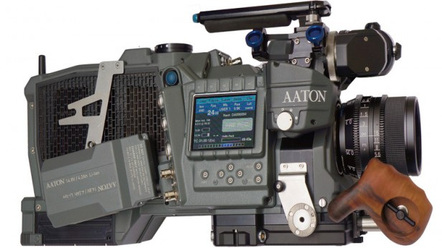 Tweet Tweet Upon its eventual release, the Aaton Penelope Delta just might be the most innovative digital cinema camera on the market. The Delta features 14 stops of latitude, onboard 3.5K RAW recording in CinemaDNG (with simultaneous proxy recording ability), the world’s first optical viewfinder for a full-res internally-recording camera, an ISO 800 base sensitivity, a mechanical shutter able to reduce that sensitivity by 3 full f-stops, a revolutionary sensor package that simply boggles the mind, and all within a quiet, operator-friendly body. This machine means business — and it’s not going to be cheap, either — but the specs and design plainly speak for themselves. Read on for the full details. Here is Aaton’s founder Jean-Pierre Beauviala on the camera at this year’s IBC: IBC 2012 - Aaton from Film Cyfrowy on Vimeo.
The specs list is really only the tip of the ice-berg, though. Some of the other unique design elements that make the Penelope Delta so note-worthy require a bit more in-depth explanation. 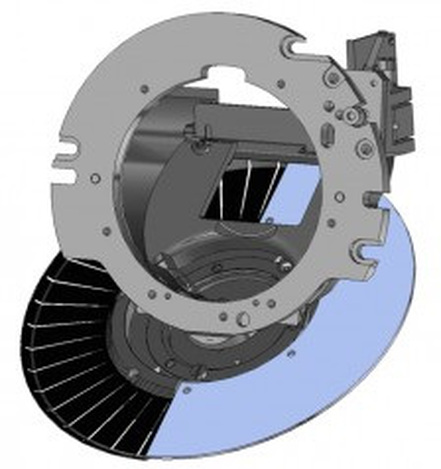 The Shutter The major side-effect of the low-light revolution is, well, our imaging chips naturally being really sensitive to light. This can become a problem in well-lit conditions, traditionally necessitating the use of neutral density filters. A problem we discuss a lot less is the infrared pollution that regular ND filters can create. Aaton’s solution to this problem is ingenious because it almost literally reexamines and reinvents the wheel, so to speak: the shutter. In addition to allowing you full mechanical control over shutter-angle, the Penelope Delta allows you to switch from a traditional half-moon spinning mirror to another set of blades which transmit exposure through many tiny slits. This reduces the ISO 650/800 sensitivity of the shutter down to about ISO 80/100, all mechanically/optically, and without affecting the shutter angle itself. A render of this design, courtesy of Aaton, is pictured to the right. This method also circumvents the loss of dynamic range that occurs with the attenuation employed by DSLRs at sub-base ISOs. The Sensor The sensor itself is another, well, marvel, really. A number of things make the Delta’s imager special, not the least of which is its Dalsa origins (anybody?) and the fact that it’s a CCD — an acronym we haven’t heard attached to new cinema camera descriptions for far too long in my opinion. The way things have been going for a while now seems to dictate that CMOS sensors are less expensive and, in terms of bang-for-buck, more potentially light-sensitive than would be their CCD counterparts. To be honest, I really never thought I’d have a chance to say this — but we now have a 3K+ Super35 sized ISO 800 CCD at the head of a motion picture camera. The reason Aaton chose a CCD over CMOS has to do with another thing we don’t usually talk about — photosite fill-factor. As John Brawley explains in a great post on the camera, CCDs have a greater pixel-fill potential than CMOS sensors do, because less of a CCD’s surface area must be dedicated to transfer circuity rather than light-capturing elements. This means the Penelope Delta will possess smaller “gaps” in the image it gathers, as its sensor has a 90% fill-factor versus the 75% commonly found in CMOSs. This will help to eliminate aliasing potential, for one, as well as produce a more all-around “full” image (visual explanation of sensor fill-factor from Dalsa in Links below). Something even more space-age about the Delta’s sensor, though, is an option which allows the sensor to actually move in place. This capability oscillates the imager by a half-pixel offset each frame, randomizing the noise structure of the image. Fixed noise structure is a difficult problem to bypass in the digital world, but it seems as though Aaton has done so to a point never before achieved. Moreover, Aaton claims that the resolution created by this sensor movement actually increases the effective spatial resolution of the imagery over time. Though any given single frame will resolve whatever a debayered 3.5K image equates to, in motion the consecutive frames combine to virtually resolve an estimated 7K before debayering. That’s right — the Penelope Delta’s sensor can resolve 7K RAW through a method of time-travel (not really but you can understand what I mean). The Results After all of this mind-bending innovation, what do the images created by the camera actually look like? Film and Digital Times got a chance to check out some test clips shot by Caroline Champetier, AFC, and had this to say about the footage: Racing from IBC hall 11 to Marquise technologies in hall 7, we looked at the dailies. Filmic and gorgeous. An available-light scene in a cafe held noiseless detail in deep dark shadows under the chair (below, left) while highlights in the silver espresso machine did not burn out (right). Apologies to Caroline–my graded jpeg below doesn’t do full justice to the original DNG file. Here’s the graded jpeg in question (courtesy Jon Fauer, FDT): You may access the CinemaDNG clip this still is from and others from the links below.
As mentioned earlier, when this camera comes out — and there doesn’t seem to be any definitive release dates thus far, though John Brawley estimates that five working prototypes will ship in December — it’s not going to sell for pocket-change. Mr. Brawley’s post says the target price will be around 90,000 Euros, which is about $120,000. That’s more than a little outside the realm of short-term ownership for me, but I’ll be pleased if I have the opportunity to work with the Penelope Delta on a rental basis before I turn 71 years old. Are you guys as excited about the technologies at work here as I am? Do you think the Penelope Delta will be able to cut a sizeable share out of the RAW digital cinema market once it comes out? Links:
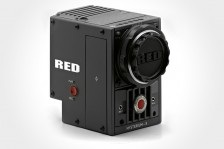 RED EPIC and SCARLET Get Simultaneous HDMI/HD-SDI in Stable Firmware Release Joe Marine10.18.12 @ 5:48PM Tags : firmware, red, redepic, redscarlet If you were one of the lucky few who got in on the recent RED SCARLET deal (or you already owned one), RED has just announced a new stable firmware update that allows the HDMI and the HD-SDI to output a signal simultaneously on both the EPIC and the SCARLET. This had previously been impossible without the use of a splitter of some kind, but it’s clear that the EPICand SCARLET are powerful enough to not only record internally, but also send out two debayered signals at the same time. Check out the rest of the major additions in this update below. These are some of the significant additions in this release — version 3.3.14:
I know some of you were trying to avoid buying the 5″ RED Touch LCD, but then it was mentioned that the Touch LCD was required after performing a firmware upgrade. Searching through the REDUser forum, I came across the answer, and it seems RED has made it possible to use a third party monitor even after a firmware upgrade: The only issue with using a 3rd party monitor as a primary monitor is switching the menus to it after a firmware update. At first we had to ask for a force HDMI preset for each new firmware but now red has created a download package with everything you could need. It’s found in the support section of red.com in the downloads portion and it’s called DSMC resources. Inside will be a series of folders one should be preset files, inside of that will be a selection between firmwares select your, then select the preset you want 720 or 1080, hdsdi or hdmi. Now all you have to do is place the file in a folder named force_preset in the root of your ssd, boot the camera it will run the force preset and then the screen should turn on. You can find the firmware upgrade from RED using the link below. Link: RED Firmware Upgrade — Downloads Top 10 Reasons Why First-Time Freelancers Fail
There’s quite a fetish for failure-as-fodder these days. Search “failure” on popular business sites like Forbes, Entrepreneur, or Inc, and you’ll get loads of articles on how it can be a great teacher. I have to admit: I used to party on this bandwagon. Rally people to feel free to fail, as if it encourages higher-levels of creativity. Self-destruct certain projects just to see what happens. Then the Harvard Business Review released their Failure issue. And I saw the cult of failure for what it was: a misguided attempt to ease anxiety. This got me thinking. Do I have to fail at being a first-time freelancer to learn to be a successful freelancer? The answer is an unequivocal NO. Listen, failure can be a great teacher—especially if you learn from someone else’s failure. So, if you are a first-time freelancer and would like to become a seasoned one without having failed—then read on to learn the top ten mistakes first-time freelancers make and how to avoid them. Achieving success doesn’t require you to fall flat on your face first. 1. Too Much Competition Creative people are confident. Cocky. Inside the creative board room at the agency they bristle with enthusiasm for their craft. But no matter how clever you think you are, you are going to have to work very hard to convince people to work with you when you are on the outside by yourself. Just look around you. The field is full of very talented people. Like it or not—they are your competition. And the sad truth is not every determined and talented freelancer can become a rock star. There are other people you have to compete with. You have to work harder than they do to get attention, land jobs and reap referrals. Otherwise the competition will eat you alive. 2. Obscurity Dogs You Speaking of working hard to get attention…think of the most successful people you know. Doesn’t matter what field they are in: real estate, bartending or graphic design. The degree of their success is often proportional to the degree in which they are famous within their niche. The degree of their success is often proportional to the degree in which they are famous within their niche. People know their name. They refer their work. They know how to pick up guest posts and speaking gigs easily. This is the reward of popularity. Without popularity and attention you won’t get leads. Without leads your business will die. See, your problem isn’t so much lack of money. It’s lack of attention. It’s that you are mired in obscurity. This is where good marketing comes in. Good marketing breaks through the clutter, competition, and confusion. Good marketing starts with building a reliable brand—and promoting that brand like mad. 3. Lack of Hustle When it comes to freelancing, execution is everything. Everybody likes ideas. But more importantly we like it when those ideas become a reality. Laziness, lack of organization and lack of prioritization do not mix well with freelancing. You can talk a great game as a freelancer, but you need to deliver on game day, which is every day. Each work day you need to do the hard stuff first—then the fun work. Meet deadlines and then some. Keep your promises. Show your clients and the world that you can rock – that you have a motor. And as a rule of thumb you should always under promise and over deliver for your clients. 4. Poor Rate Model One of the most common questions I get asked from freelancers is how much should I charge? To be honest, I can’t really answer that question for you. I can only give you some advice. Here’s three pieces:
Pricing is an art, you get better with it over time. And you get better at it the more you negotiate. 5. Can’t Negotiate Ah, conflict. The essence of a negotiation. And what most creatives dislike most. We wouldn’t have jumped into our creative fields if we liked people and dealing with them everyday—especially on contentious terms. But sweaty palms or not, you need to negotiate. You need to seek a win-win relationship with a prospect through tactics like these:
6. Lack of Maturity From inside the cubicle freelancing is attractive. It’s seductive. It’s the party lifestyle of the working famous and unemployed rich. Who wouldn’t want to sleep as late as they want, take three hour lunches and work six months out of the year? If that’s how you view freelancing, then you are immature, not emotionally (though I’m not eliminating that option), but certainly professionally immature. Being a freelancer demands a massive amount of maturity. It demands discipline, confidence, organization, and courage. 7. Failing to Count the Cost I quit my job without a plan B, without much of a savings, and without much of a clue as to what I was getting myself into. I wouldn’t recommend that approach. There are better ways to begin your freelance career. Do you have six months of living expense? If not, keep your day job, pick up a few freelancing jobs and sock away that money before you quit. You’ll also need money for advertising costs, too. And don’t forget about the emotional and relational toll that working for yourself can take on you and your family. My wife and I covered some of the roughest road in our fourteen years of being married during my first year of freelancing. Count the cost before you cut the cubicle cord. 8. Too Many Distractions Part of the allure of freelancing is working to our own rhythms. We get to make our own schedule. We get to do with our time (as long as we are mature and are getting our work done) what we want. We could tackle that book we’ve been dreaming of writing. Collect our best designs together for an art show. Learning how to surf. However, these things could easily become distractions. We could easily find ourselves spending half a day on non-essential tasks. Or get tempted to put off for tomorrow what we should do today (that being work) so we can finish a fun project. There are other things that can become distractions when you work for yourself:
You can get dropped by a client one day only to have that income replaced the following. I wasn’t rational. And that’s an extreme case. The future looked very dark for me until I got a grip. But don’t expect that darkness to go away forever. It can come back. It’s an occupational hazard. You can work so hard (because you took every job that came your way) that you find yourself dreading the computer screen. You can get dropped by a client one day only to have that income replaced the following. The temptation is to self-medicate. Drink two beers in the afternoon to get you through, four to help you get to sleep, eight to help you enjoy the weekend. I like beer, but I like self-control better. And you can’t control your emotions when you are drunk. 10. Giving Up Too Soon Quick story. About halfway through our 32-day journey of the West Coast I was going to get the opportunity to spend some time with a great uncle. He was financially independent after building and selling his own manufacturing business. I wanted to talk to him about working for myself. Pick his brain about success. I was looking for something exotic. But his advice was basic: work hard. Okay. And when I asked him when do I give up if working hard wasn’t cutting it he responded: when you can’t afford it. Oh. It was simple in his mind. You threw in the towel when you were losing money. You could run into setbacks. Struggle with difficult clients. Bang your head over accounting issues. Juggle dozens of projects. But you didn’t quit until you were losing a lot of money. So, what other reasons are there that cause first-time freelancers to fail? How did you make it over the initial obstacles that face freelancers? What are you still struggling with? Boost Your Freelance Brand 100 Percent with Your Expert Status
I’m a little addicted to those reality television shows where a group of people with a particular skillset compete to prove who is the best. I’m particularly enthralled by any challenge where a creative professional has to deal with a client — they’re the most likely to end horribly. That’s because most creatives err on the side of giving their clients everything they want. But that rarely results in the best possible wedding cake or dress or alien makeup. The response from judges on such episodes might as well be on a loop, no matter what profession is being showcased: “You’re the expert! You have to tell the client what she needs!” That’s the advice that always comes from creative professionals at the top of their game — the people who have turned a skill into a brand name. To build a lucrative freelancing career, it isn’t enough to have the best skills out there, despite what these reality television shows may indicate. But you do absolutely have to be an expert: you need to be the person that advises your client so that they get the result they want, not the project they asked for. You Are an Expert It takes a lot to be willing to tell a client that he’s not going to get the results he wants from a particular project; after all, you only get paid when you complete projects. One of the problems many newer freelancers face is a lack of confidence: you know everything you don’t know in your chosen profession and that’s incredibly intimidating. But even if you’ve only just started taking on clients, you know more than your clients — otherwise they wouldn’t hire you. It’s important to remember that you do have a level of expertise beyond your clients and you’re working to learn more all the time. It takes a lot to be willing to tell a client that he’s not going to get the results he wants from a particular project; after all, you only get paid when you complete projects. But it’s just another element of having confidence in your own abilities. Expertise is a spectrum. You’re not going to wake up one day and know that you’re suddenly an expert and that everyone will recognize you as such. It’s a situation where most people will take you at your word if you say you’re an expert. That can make it more intimidating, but as long as you do the work to back up your expert position — learning, trying new things, forming opinions and discussing them — you can build your confidence in your own expert status. The Expert / Niche Connection Being an expert looks a lot like having a niche: you have to focus on something a lot more specific than ‘graphic design’ or ‘writing’. Your clients look for people who are experts in their industry, in the technologies they use and in helping them sell whatever they’re offering. By incorporating that information into your branding, as well as working to establish your expertise in a few other ways, you are effectively telling a select group of people that you are the perfect freelancer for them and that anyone else out there would be better off with someone else. That can sound like a bad thing — purposefully limiting your audience means that there are less people out there who might give you money. But it balances out, because clients are willing to pay for results. If you can show a proven track record of getting results that are relevant to your target market, you can charge higher rates and cut down on the time it takes you to convince a prospective client to come on board. Invest time in deciding exactly who you want to work with and what types of projects you want to focus on. From there, it gets easier to figure out what knowledge will really help your clients.
You’ll also have a far easier time branding yourself when you’re only selling to one market. Just by knowing the jargon a niche uses, you can optimize your website for the terms that industry will search for, rather than just broadly sprinkling in the terms that go along with your broader skill set. You can write marketing materials that specifically address their needs and count on a better quality of word of mouth — your expertise may very well become a choice bit of industry gossip! But you can also take your expertise beyond a well-targeted website. An Expert on the Outside In order to land plenty of well-paying clients, you want your name or brand in front of them on a regular basis. In order to land plenty of well-paying clients, you want your name or brand in front of them on a regular basis. That’s a bit easier for an expert than for a freelancer. After all, journalists want to include quotes from experts in their articles, conferences want to have experts speak and radio hosts even want to interview experts. Of course, some topics get more press than others, but every industry has its own conferences and its own trade publications. It’s just a matter of making yourself available as a resource. One of the first steps has to be joining the general community talking about the industry. While you should still spend time on learning and discussing more about freelancing in general and your specialty in particular, you need to be spending as much time as you can in the forums discussing the industry you focus on. That can include:
From there, it’s a question of capitalizing on your connections. Just as you make yourself available to clients as a freelancer, you make yourself available as a resource. If you can establish yourself as someone who knows the ins and out of the industry, there are opportunities you can get access to. You can write articles of your own for trade publications. You can submit talks to conferences. Heck, if you want to, you can write a book about the industry you work in. It’s worth remembering that not only do these efforts put your brand in front of more prospective clients — they can also earn you money in their own right. Most people aren’t going to get rich writing industry-oriented books, but you may very well be able to cover the time you spend actually putting together a book, which is a lot more than you can say for most marketing projects. What Your Expertise Means To someone who hasn’t quite figured out attaching a file to an email, even adding to a website through a content management system can seem like black magic. To that person, a good web designer, who can tell him what he should bother with in terms of building and maintaining a website, is an expert. It doesn’t take anything fancy to establish your expertise. Your clients expect you to provide expert advice when they come to you; if they knew how to do the things you find basic, they wouldn’t need a freelancer. Even at what you may think of as rudimentary levels in your field, you’re still ahead of where your clients may be. But there is a level of responsibility that goes along with being an expert. Your clients will trust you to give them the most up-to-date advice that will really get them the best possible results. That’s the trade off for charging higher prices. To be an effective expert, you need to make a point of keeping up with the trends in your industry, learning new technologies and generally doing everything you can to stay ahead of the curve. It requires a level of work beyond what just landing projects as a freelancer may take. But it’s worth it. 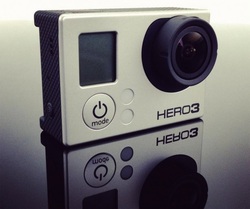 GoPro has announced three camera models, full details here] We knew it was coming sooner or later, but I don’t think many suspected that the new camera from GoPro would be quite this powerful. Industry pros and others were invited to a GoPro event in the Bay area tonight where the brand new 4K capable HERO3 Black Edition camera was introduced. Sony and JVC have been trying to get in on the action with their own POV cams, but when it comes down to specs, this new pocket cam from GoPro might be in a whole other league — and it’s even going to be compatible with the new Protune firmware upgrade that was just released. Click through for everything we know so far about the camera. Here are the specs so far (thanks to Stu Maschwitz for the info):
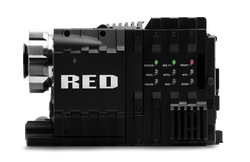 red has added functionality to their already modular series of cameras with the addituon of the Meizler module. Below is a tutorial fo the ins and outs of this technologiacl marvel. Meizler Module from RED Digital Cinema on Vimeo. |
KimataDP | Director | Editor ArchivesCategories
All
|
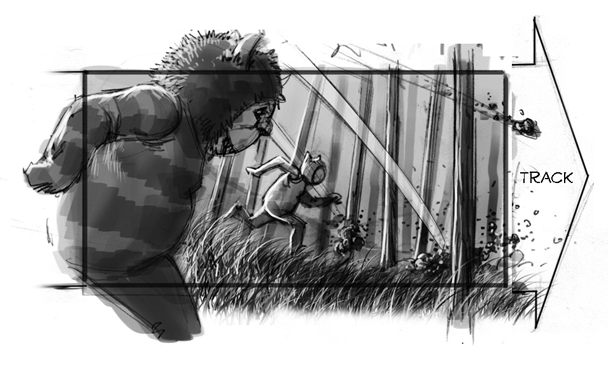
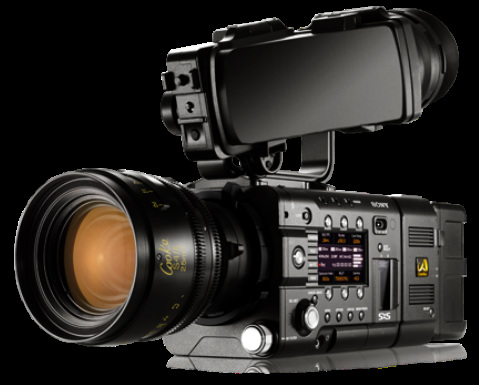
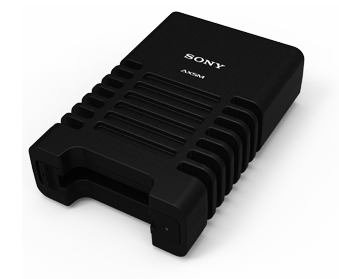
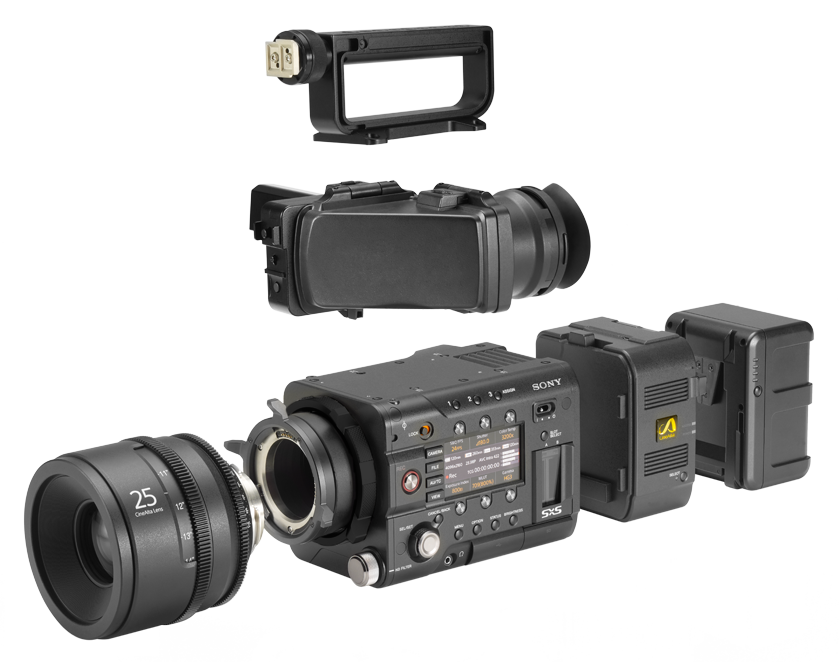

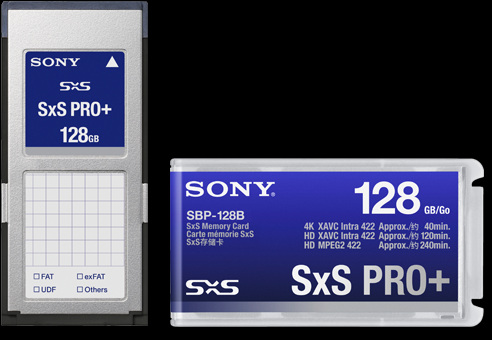
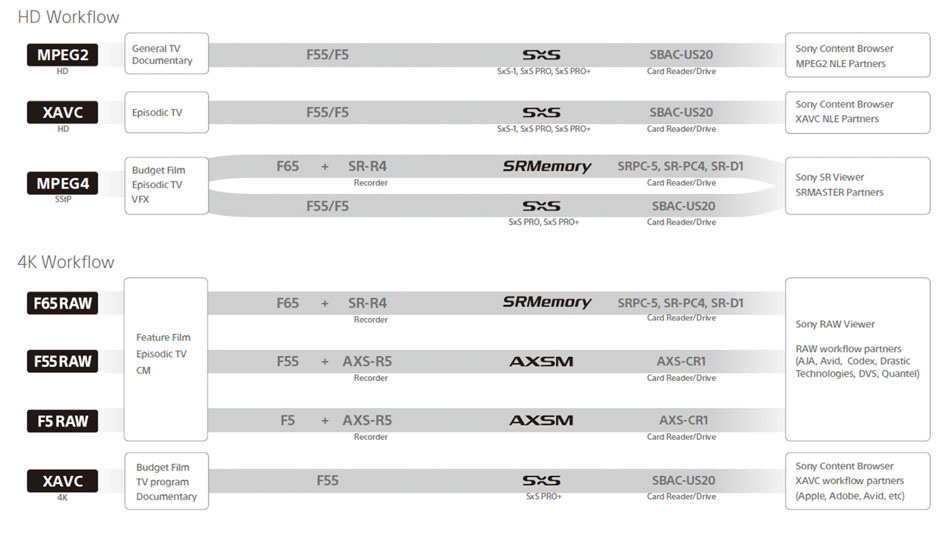
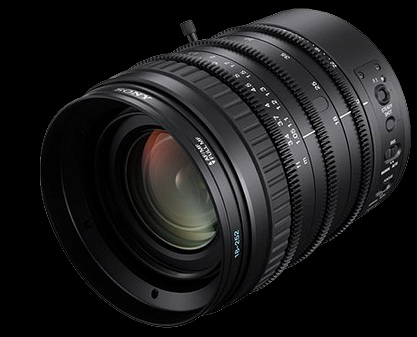


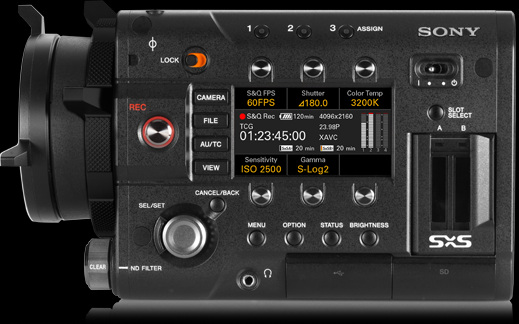
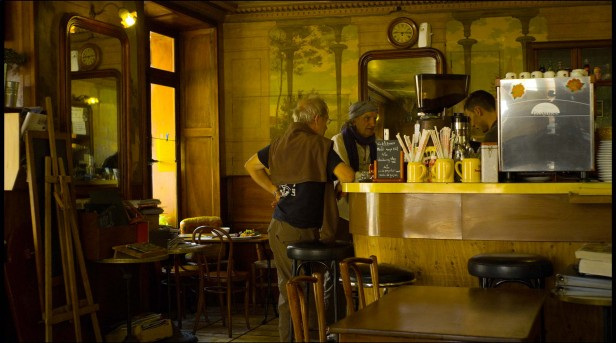
 RSS Feed
RSS Feed